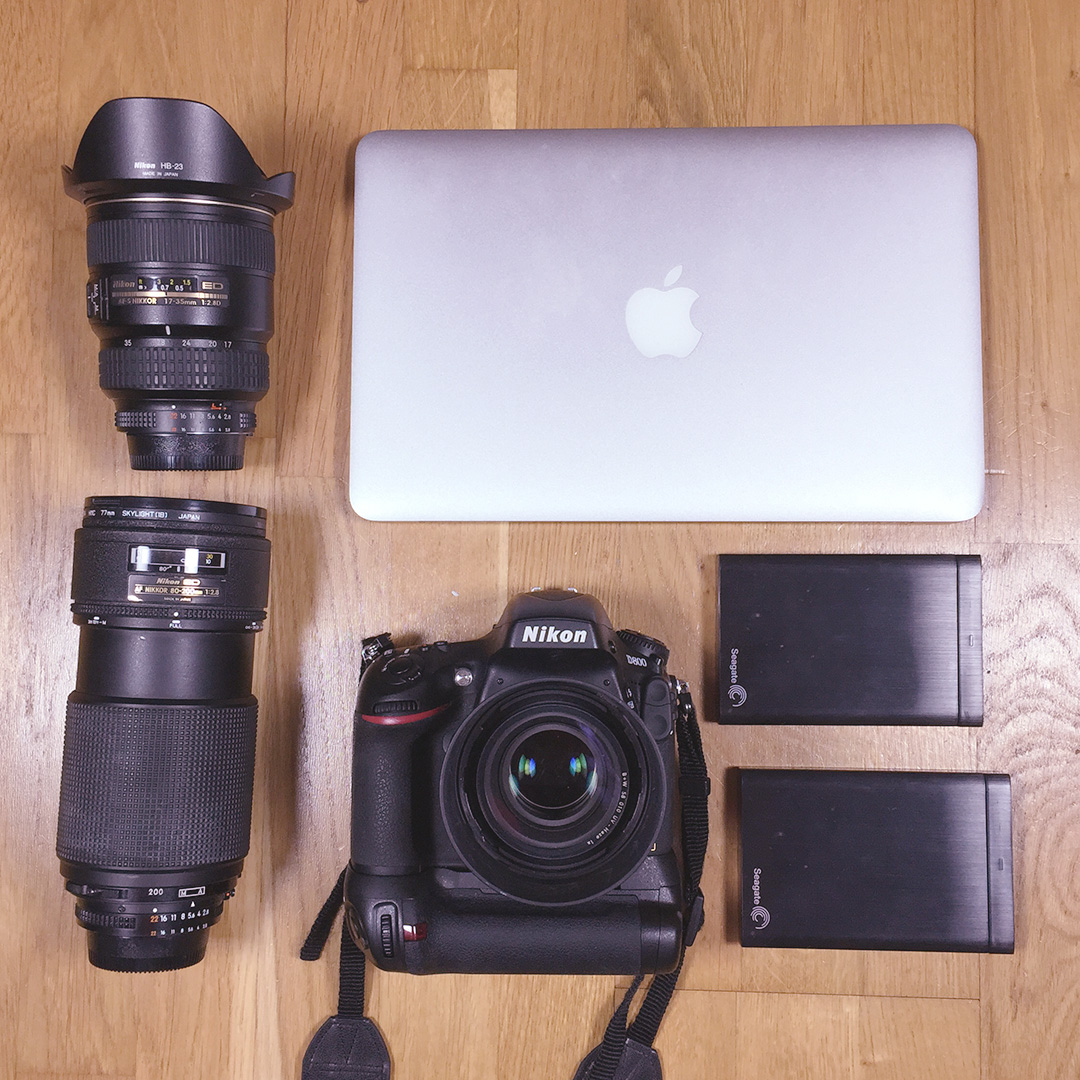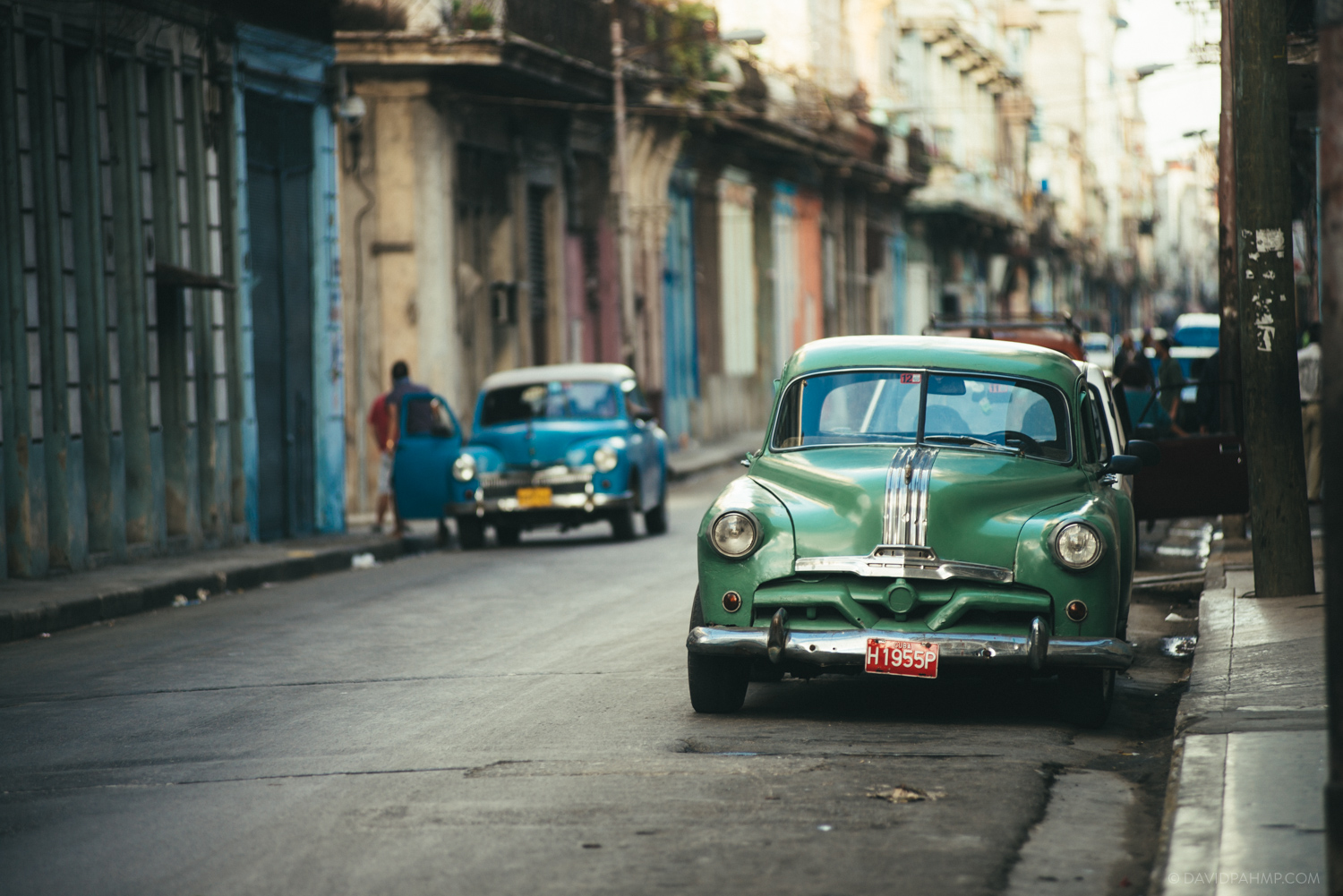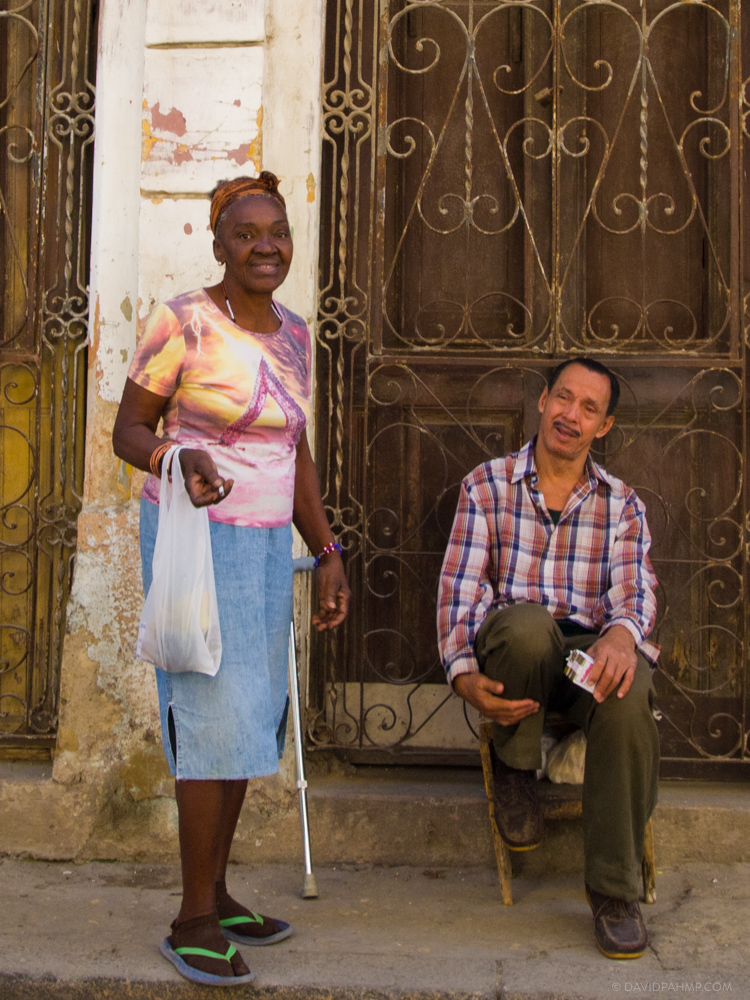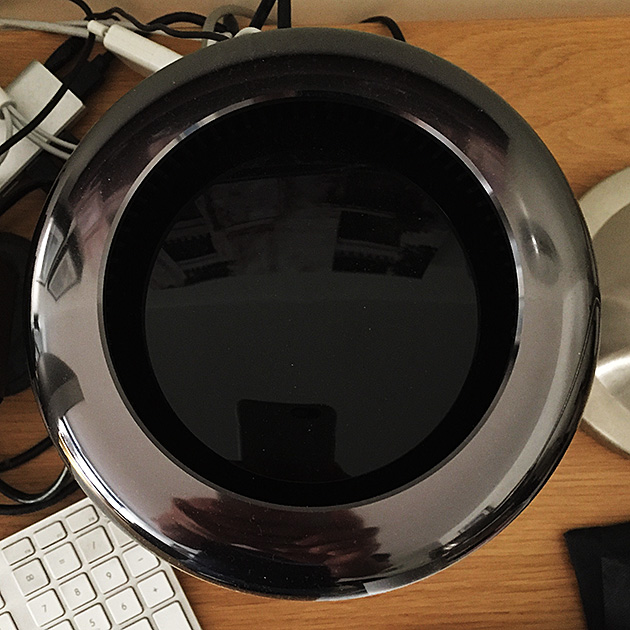Travel photography essentials
Or simply put – backup backup backup!
I’m not a travel photographer per se, so maybe my gear might not be all that streamlined for a constant life on the road. But I do know one thing, and that’s what’s most important to return home with, apart from your own body intact of course, and that’s your images. Sure, you’d want to bring back your expensive equipment and probably your clothes too, but those things are replaceable, which your images might not be.
So there’s the first advice – don’t bring irreplaceable stuff if you don’t have to on your travel. If you got a unique item you treasure, or a favorite pair of jeans, maybe you should leave those things at home. But hey, that’s up to you.
This is the key ingredients of what I bring.

A camera, a 80-200 zoom, a 15-35 mm zoom and a 50 mm. Yes, I’d love a really long tele-zoom up to 400 or 500, maybe a lens that covers the 35-70 gap, but you can only owe so much. And bring even less.
Chargers, cables, memory cards, batteries, toothbrush, those things kind of goes without saying, right?
Then there’s the computer, an 11 inch MacBook Air. Why so small? Because I don’t use it for retouching really, more collecting images and writing. It’s the perfect size to have on your lap killing time at an airport. Let’s not get into why most airports are totally hostile towards the idea of a comfortable place to sit.
The routine to protect your images
But then the key ingredient – two hard drives. This is the only time you see them together. As soon as I start my journey they stay separated as much as possible, as a precaution. One goes in the carry-on and on in the checked-in luggage.
Every night after a day of shooting, I download the images to both disks and then keep them separated in the hotel room as well.
If you have enough memory cards, you can store them and not erase to reuse them either, as a third. Your computer would probably not fit all your images, otherwise you can have that as your fourth.
While copying all the images, I add them to my Lightroom catalog at the same time. This way I can skim through and review the work of the day, to see what I might’ve missed and plan the next day accordingly.

Let’s start at the production stage – the actual photo shoot. For irreplaceable inrecreatable moments like weddings, you may want to go double memory card shooting, if your camera supports that. It means saving your images on two cards at the moment of shoot, in the camera.
For most other moments, you can reshoot if the memory card fails. So let’s not go too far, just far enough, and that’s called backup backup backup.
A backup camera, if you can afford it. What good will you do on location with no camera at all? Many travel photographers have both a DSLR and a smaller point and shoot. Some places you get stopped with the big camera, and the little one is less intimidating for approaching people on the street.
As mentioned, plenty of memory cards. Did I say batteries? Yes, of course more than one camera battery. And never assume they all are charged, make sure they are. Assumption is the mother of all, ehm, problems.
What more to bring double of? Most is really a question of how much space you got in your luggage, how long you’re away for, if you travel alone or with other people. On my travels to Havana, I make sure to not miss one single thing, because the supply of electronics are [at least still] very scarce, and limited to maybe regular AA batteries and not much more. Even more so if you’re on a safari. Then you’d be needing options for recharging batteries as well.
Other travel behaviors
Other than that, I guess there are a few things I usually do. Like bring a big bag of candy, because you never know when you wake up in the middle of the night hungry. But that’s a really bad advice, so let’s call it a behavioral flaw.

This photo is actually a walking-by shooting-from-the-hip. Not until when I got back I realized my deed did not go as unseen as I thought.
Street smart
Yes, in many places and countries you can’t blend in no matter how much you’d like, but you can at least make your presence as discreet as possible. Like carrying your equipment that doesn’t shout ”expensive camera”, adding a bit of duct tape on your camera to make it look banged up and not worth stealing, and always be aware of your surroundings. Both for potential robbers, as well as interesting photo opportunities. The saying that they come in snail speed and leave at lighting speed is most often very true. You can watch the moment build up for sometimes minutes, and then be gone in a split of a second. That’s why I say the first flaw of a camera is if it’s slow. A camera that you have to wait for, is seldom good for street photography.
Lens trickery
A portrait may be best up close and with a subject both aware and OK with you taking their picture, sometimes the candid shots are preferred. It’s all in the context. With a long lens you can most often catch people off guard, never even aware you took a picture at all. And with a wideangle, the camera might give the perception of pointing beside them, when you’re really include them in the frame. To emphasize that, I usually don’t make eye contact after the shoot, but look behind them, at the building that had ”caught my interest”. Then they move on without a second’s thought.
Approach and shoot
Some photographers apply shoot without consent or thought. They usually don’t care if they offend anyone either. I’m on the other hand way in the other end of the spectrum. But people are more often than you might think, OK with you taking their picture. Just be prepared to answer, maybe the most common question – what’s the pictures are for, or the reason you want to photograph them. You can make up a story, but as several articles I’ve read suggests, simply reply with ”because I’m a photographer”.
The truth is also often handy – you’re shooting to portrait the city and its habitants, maybe for your portfolio, a website or a magazine. Offering them a copy of the images is always appreciated. Hand them your business card and tell them to contact you for it. Never happened so far for me.
Back home – back up
As soon as you’re home, it’s time to merge your Lightroom catalogs if you made a separate one on your trip, and put your images where they belong, so they also get backed up in the cloud. Because yes, if you don’t have it already, stop reading now and sign up for Backblaze.com automatic online backup, or some other similar service. Once installed, you pay like $5 per month and computer, and never have to think about it again. It also makes you sleep better at night.
Lightroom merge?
Yes, many photographers work with one powerful laptop only, and connect it to a big screen when at home. Since I work as a graphic designer as well, I have my main computer stationary and only a smaller 11” MacBook Air on my trips. It’s more for writing (like I’m doing write now, at the airport, on my way to Barcelona) and for a temporary Lightroom catalog with whatever I’m shooting at that particular trip. I don’t generally need to access my other images anyway, unless maybe if I’m on a returning trip to a location and want to review what I caught through the lens already. Then you could do a copy of your Lightroom catalog (without the highres images) and just bring that on your computer. I’m sure you’ll figure out what suits you best.

The Mac Pro computer, as seen from a tiny distance above.
To read more about Lightroom and the benefits of it and shooting in RAW format, you can read more later in an upcoming article.
OTHER ARTICLES
Removing chromatic abbreviation in Lightroom
Get rid of those nasty thin colored edge lines
The essence of getting things done
Tips from favourite inspirational people that helped me getting focused and more things done
Portrait Photography gone wrong
Some basic tips to follow for photos used in presentations, agendas, ads and other printed material.
All about image resolution
Explaining when resolution matters, pixel dimensions and what is a good size for a print.
Lightroom export for instagram
Setup Lightroom for the optimal Instagram export with automatic transfer via Dropbox.
Travel Photography Essentials
What to bring on a photo travel – or simply put, backup backup backup!


